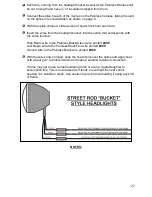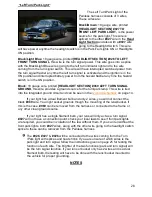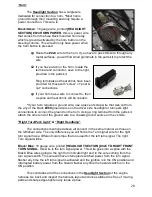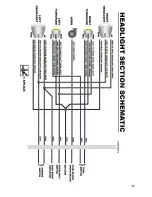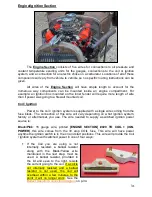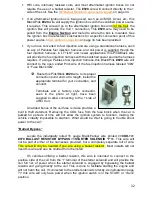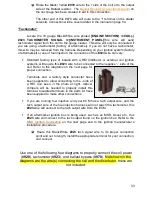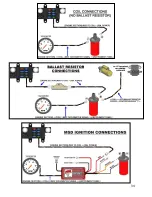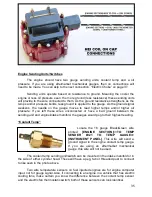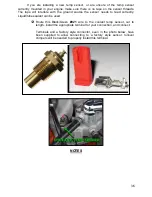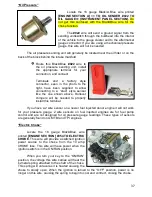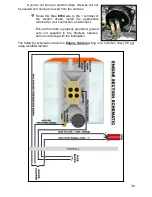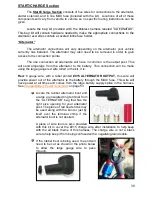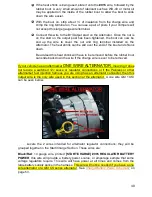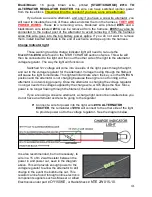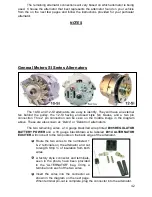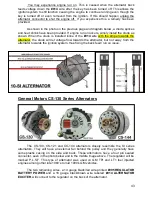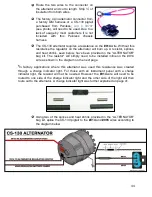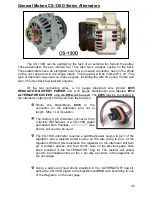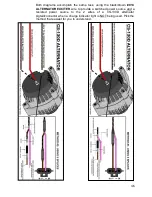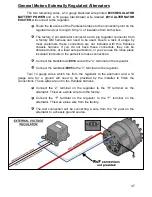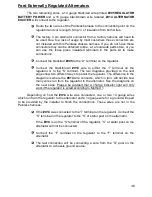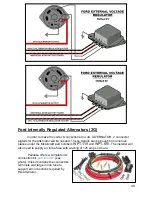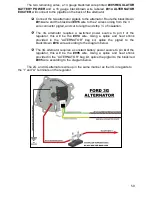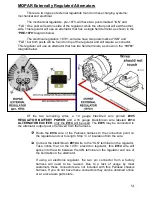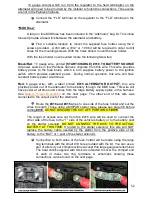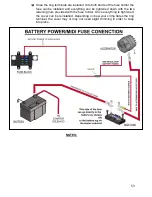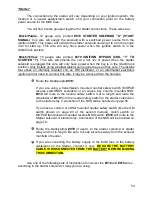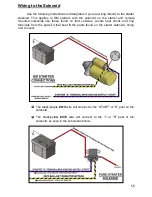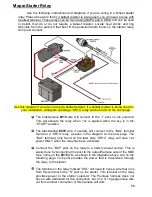
41
Black/Brown
: 16 gauge brown wire, printed
[START/CHARGE] #914 TO
ALTERNATOR REGULATOR EXCITER
, this wire can have switched ignition power
from the fuse block. This wire will not be needed if you have a one wire alternator.
If you have a one wire alternator, and only if you have a one wire alternator, you
will need to insulate the ends of these wires and stow them in the harness,
THEY ARE
POWER WIRES
. These two remaining wires, black/red wire printed
#995
and a
black/brown wire labeled
#914
, can be removed from the harness.
#995
may also be
connected to the output post of the alternator to avoid removing it from the harness
since this wire goes into the big battery power splice. If you do not want to remove
them, install insulted terminals to the end of each wire and tape up into the harness.
Charge Indicator light
Those wanting to add a charge indicator light will need to re-route the
Black/White
#914
wire found in the START CHARGE section of wires. This wire will
then be connected to the light and then out the other side of the light to the alternator
voltage regulator. The way the light will function is:
Switched 12v voltage will come into one side of the light, pass through the light,
and out to the voltage regulator for the alternator. Voltage moving through the filament
will cause the light to illuminate. This light will illuminate when the key is in the ON/RUN
position and the alternator is not charging because the engine is not running or the
alternator is not working properly. Once the alternator is charging the voltage regulator
no longer needs the voltage supplied by the charge wire, which stops the flow. Since
power is no longer flowing through the filament, the bulb does not illuminate.
If you are using a one wire alternator, a charge light cannot be installed since you
do not have an alternator exciter wire going to the regulator.
Connect a wire for power into the light, wire
#914 ALTERNATOR
EXCITER
, the remainder of
#914
will connect to the other side of the light
to provide power out to the voltage regulator
.
See the diagram below.
It is also recommended, but not necessary, to
wire in a 15 ohm 2 watt resistor between the
power in and power out, seen in the diagram
above. This will provide enough power to the
voltage regulator to allow the alternator to still
charge in the event the bulb burns out. This
resistor can be found through online electronic
component suppliers such as Mouser or Allied
Electronics under part #
OY150KE,
or RadioShack #
NTE 2W015-10
.

